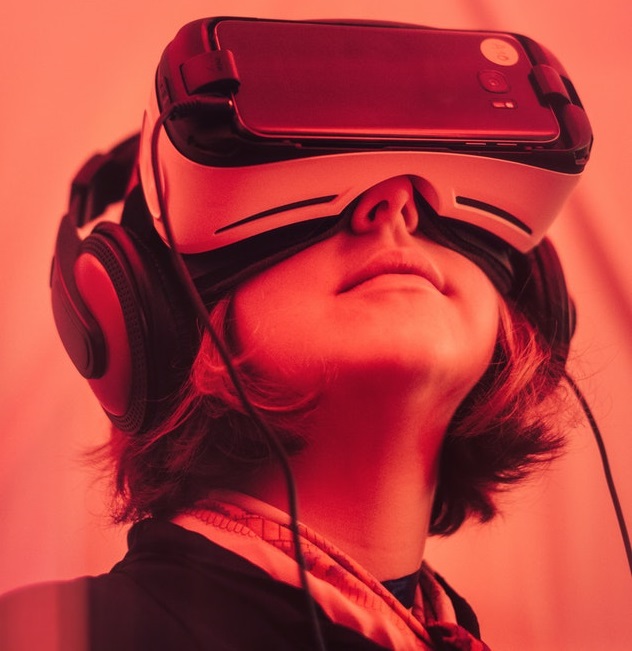Assistive technology (AT): Easy to understand & easy to benefit from

3rd of October, 2018
By Brendan Dunphy, BLD Communication
We’ll begin this article by putting some clarity around what assistive technology (AT) actually is, look at key AT areas and finally, how it can benefit you as part of your potential or existing NDIS plan.
We know for many, just the use of the word ‘technology’ can have a detrimental effect with many immediately tuning out or thinking it may be beyond their capabilities.
So let’s begin with a simple explanation:
As a field or area, assistive technology provides devices and services that help people with disability across areas from vision, hearing, learning, communication, computer access, workplace, seating and mobility, recreation, leisure, environmental controls and ageing in place.
Ultimately, assistive devices and services support people with disability to:
-
Communicate easier and more confidently with others
-
Be more independent with daily tasks
-
Participate in the community
-
Move around easier (better mobility)
-
Become more independent at home, education settings or work
-
Achieve desired goals to improve quality of life and life satisfaction
Taking it a step further, assistive technology can be divided into two main areas:
-
Assistive technology device
-
Assistive technology service
Let’s look at each and the benefits they provide.
Assistive technology device (ATD)
An explanation of an ATD as defined by the World Health Organisation is:
“Any device or system that allows individuals to perform tasks they would otherwise be unable to do or increases the ease and safety with which tasks can be performed.”
While this does explain – at least technically – what ATD is, there is a wide range of both cost and technology variations between the ‘devices’.
Low cost. Low technology.
Some ATD’s are simple with low cost and minimal technology. An example of this would be a pencil grip to assist the user to improve their handwriting by increasing control over the pen, pencil or stylus. Another may be a cup that has with enlarged handles for easier holding and dispensing.
We think you get the point!
High cost. High technology.
This might be a communication device – such as the one engaged by the late and great Professor Stephen Hawking; or more common technology such as a computer-based software solution for easier reading and comprehension.
So what are some of the common ATD areas?
These are many and varied, but some common device areas include:
Aids for daily living: These can include ‘self-help’ aids for use when eating, bathing, cooking, dressing, toileting and home maintenance
Assistive listening devices and environmental aids: Electronic and non-electronic aids such as amplification devices, closed captioning systems and environmental alert systems for the hard of hearing.
Communication: Electronic and non-electronic devices and software solutions that provide a means for expressive and receptive communication
Computer access and instruction: A huge area with items from input and output devices, alternative access aids, modified or alternative keyboards, special software and other devices and software solutions
Mobility aids: Electronic and non-electronic item such as wheelchairs, walkers and scooters to increase personal mobility
Visual aids: Electronic and non-electronic aids such as magnifiers, talking calculators, Braille writers, adapted tape players and screen reading software applications for the computer.
Assistive technology service (ATS)
The second part of assistive technology is ATS.
This is, in essence, any service that directly assists those with disability in the selection and use of an assistive technology device. So:
-
The evaluation of the needs including a functional evaluation of the environment
-
Purchasing or securing the assistive technology device for those with disability
-
Selecting, designing and fitting (as required), assistive technology devices
-
Coordinating and using other therapies, interventions, or services with assistive technology devices
-
Training or technical assistance for those that work with and support the person(s) with disability
You can find some ATD examples here:
https://abledata.acl.gov/new_products
The NDIS and providing assistive technology supports
The NDIS is, of course, a major supporter of assistive technology and it can be included in your plan if it is identified as providing reasonable and necessary support to meet needs of those with disability and to help them to achieve better outcomes in life.
This noted, it is often the case that you may need help to select the right AT solution for your needs. Where this is the case, your NDIS Support Coordinator can help provide appropriate supports in your plan.
This could include an AT assessment https://www.ndis.gov.au/providers/at/assessing-at.html which assists to understand what the most appropriate AT solution may be to meet the goals in the plan.
A word of caution!
Currently, the assistive technology is relatively new and untapped. This noted, there are many manufacturers and providers who are keen to jump on this lucrative market.
Unfortunately, this has meant many items are not (at this stage) user-friendly or functional because they often need to be customised to an individual’s needs. Also, having a great software means nothing without accessibility, so we need great hardware first then great software – and sadly software is often the first focus.
All of this said, AT can bring significant and indeed, life-changing benefits when carefully selected and engaged to the individual.
NADO
NADO is a registered provider of NDIS supports for a broad range of personal assistance from plan management, support coordination and accommodation, to the development of life skills, assisting in personal activities, behaviour support and psychological services.
Our goal is to help you achieve your goals and we are a major supporter of the assistive technology. We know and see the benefits it brings when properly engaged.
At NADO we specialise in delivering NDIS services and as part of this, welcome any questions you have on assistive technology from devices and services to inclusion in your NDIS plan.
As always, we actively encourage feedback on our blog content in general. We are always open to suggestions and comments!
